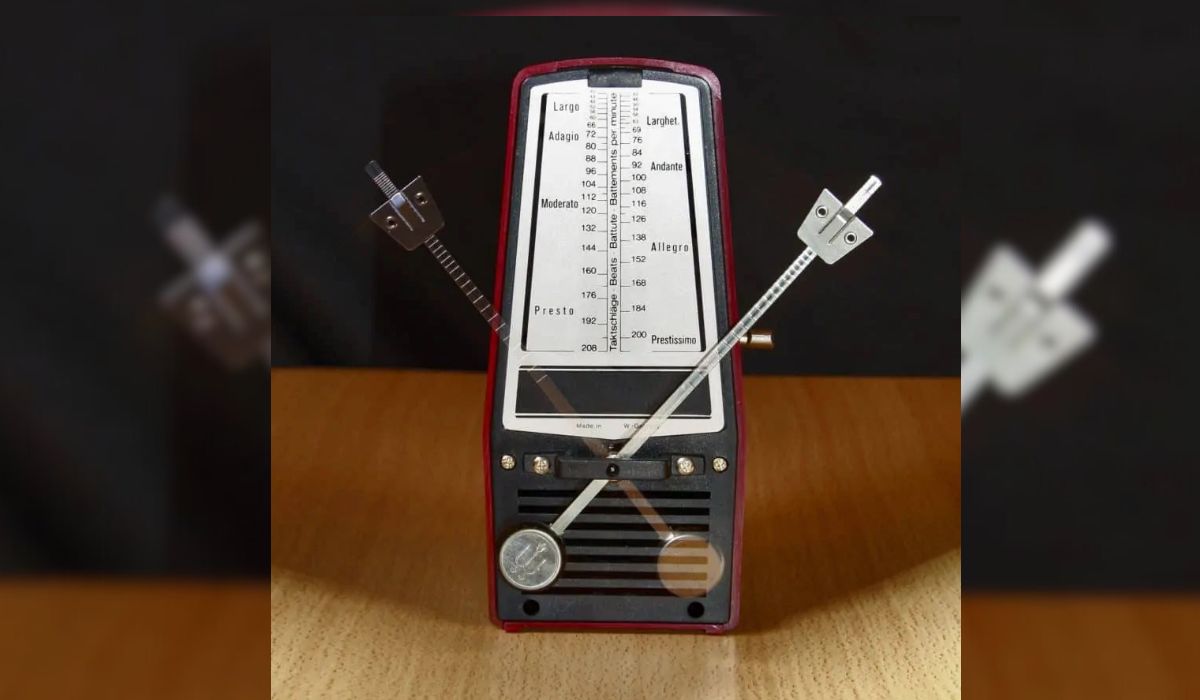Home>Instruments>Piano>How Many Scales Are There In A Piano


Piano
How Many Scales Are There In A Piano
Published: February 11, 2024
Discover the diverse range of scales found in a piano, from major and minor scales to chromatic and pentatonic scales. Learn how these scales contribute to the rich sound of the piano. Unlock the secrets of piano scales and enhance your musical knowledge.
(Many of the links in this article redirect to a specific reviewed product. Your purchase of these products through affiliate links helps to generate commission for AudioLover.com, at no extra cost. Learn more)
Table of Contents
Introduction
The Beauty of Piano Scales
When it comes to playing the piano, scales are the building blocks of music. They are the foundation upon which melodies and harmonies are constructed, and mastering them is essential for any aspiring pianist. Understanding piano scales not only enhances technical proficiency but also opens the door to musical creativity and expression.
Whether you’re a beginner eager to delve into the world of piano or an experienced player looking to deepen your understanding, exploring the intricacies of piano scales can be a truly enriching journey. From the timeless elegance of major scales to the soul-stirring allure of minor scales, each type offers a unique sonic palette waiting to be explored.
Throughout this article, we will embark on a captivating exploration of the diverse array of piano scales. From the foundational major and minor scales to the evocative allure of chromatic, pentatonic, blues, and whole-tone scales, we will unravel the beauty and significance of each. By the end of this journey, you will have gained a profound appreciation for the pivotal role that scales play in the world of piano music.
The Basics of Piano Scales
Before diving into the enchanting world of piano scales, it’s essential to grasp the fundamental concepts that underpin these melodic frameworks. At its core, a scale is a sequence of musical notes arranged in ascending or descending order, typically spanning an octave. Each scale possesses a distinct pattern of intervals, which are the spaces between the notes, giving rise to its unique sound and character.
On the piano, scales serve as a fundamental tool for developing finger dexterity, hand coordination, and aural awareness. They provide a structured framework for understanding the relationships between different notes and are integral to the process of learning chords, arpeggios, and complex musical compositions.
One of the defining features of piano scales is the concept of key signatures. A key signature denotes the specific set of sharps or flats associated with a particular scale, influencing the notes played within that scale. Understanding key signatures is crucial for navigating the rich tapestry of tonalities present in music, allowing pianists to adapt their playing according to the desired mood and expression.
As we delve deeper into the realm of piano scales, it’s important to approach this exploration with a sense of curiosity and a willingness to embrace the nuances of each scale. By doing so, we can unravel the intricate tapestry of musical possibilities that scales offer, paving the way for a more profound and fulfilling musical journey.
Major Scales
Embarking on a musical journey through the world of piano scales, one cannot overlook the timeless elegance and uplifting nature of major scales. Renowned for their jubilant and triumphant sound, major scales form the bedrock of Western music, permeating countless compositions with their radiant and optimistic aura.
Structured with a specific sequence of whole and half steps, major scales follow a consistent pattern that imparts them with their distinctive and harmonious quality. The sequence of intervals for a major scale follows the pattern of whole step, whole step, half step, whole step, whole step, whole step, half step. This sequence of intervals, when applied to any starting note, yields the corresponding major scale, each with its own unique tonal color and emotional resonance.
One of the defining characteristics of major scales is their ability to evoke a sense of joy, brightness, and exuberance. From the iconic “Do-Re-Mi” progression of the C major scale to the uplifting melodies of compositions such as Beethoven’s “Ode to Joy,” major scales infuse music with a spirit of optimism and vitality.
Mastering major scales is a rite of passage for every pianist, serving as a gateway to understanding the foundational principles of music theory and harmonic relationships. By internalizing the structure and sound of major scales, pianists gain a deeper insight into the intricate interplay of notes and intervals, honing their ability to convey emotion and expression through their playing.
As you acquaint yourself with the resplendent allure of major scales, you’ll discover a boundless realm of musical possibilities waiting to be explored. From the jubilant majesty of the G major scale to the effervescent charm of the D major scale, each rendition offers a unique sonic landscape, inviting pianists to embark on a melodic odyssey filled with warmth, brilliance, and unbridled optimism.
Minor Scales
As we venture deeper into the melodic tapestry of piano scales, the evocative allure of minor scales beckons with its poignant and introspective resonance. Unlike their major counterparts, minor scales exude a sense of melancholy, mystery, and emotional depth, weaving a rich tapestry of sonic colors that resonate with listeners on a profound level.
Characterized by a unique sequence of intervals, minor scales captivate the ear with their distinctive blend of solemnity and allure. The pattern of intervals for a natural minor scale follows the sequence of whole step, half step, whole step, whole step, half step, whole step, whole step. This arrangement infuses minor scales with a haunting beauty that has inspired countless composers to craft soul-stirring masterpieces steeped in emotional poignancy.
From the haunting elegance of the A minor scale to the wistful allure of the E minor scale, each rendition of the minor scale unveils a world of musical expression, inviting pianists to channel their innermost emotions through the resonant tapestry of notes. The expressive versatility of minor scales allows pianists to convey a wide spectrum of emotions, from introspective introspection to haunting longing, enriching their musical narratives with depth and nuance.
Exploring the realm of minor scales is an enriching odyssey that unveils the profound emotional depth and expressive potential inherent in these melodic frameworks. By mastering the intricate nuances of minor scales, pianists gain a deeper understanding of tonal color, harmonic progression, and the art of infusing their playing with poignant sentiment.
As you immerse yourself in the captivating allure of minor scales, you’ll discover a boundless reservoir of expressive potential waiting to be harnessed. Whether it’s the haunting resonance of the B minor scale or the introspective allure of the F# minor scale, each iteration offers a canvas for pianists to paint their musical narratives with shades of introspection, longing, and emotional resonance.
Chromatic Scales
Amidst the rich tapestry of piano scales, the chromatic scale emerges as a captivating and versatile melodic framework that transcends traditional tonal boundaries. Unlike major and minor scales, which adhere to specific patterns of intervals, the chromatic scale comprises all twelve notes within the octave, ascending or descending in half-step increments. This unique structure imbues the chromatic scale with a sense of fluidity and boundless harmonic potential, making it a potent tool for musical expression and exploration.
Characterized by its seamless sequence of half steps, the chromatic scale exudes a sense of tension, intrigue, and harmonic richness. Its all-encompassing nature allows pianists to navigate a kaleidoscopic array of tonal colors, effortlessly traversing the intricate terrain of sharps and flats to craft melodies that defy traditional tonal constraints.
One of the defining features of the chromatic scale is its capacity to infuse compositions with a sense of urgency, drama, and musical tension. From the enigmatic allure of ascending chromatic passages to the dramatic flair of descending chromatic runs, this scale serves as a potent tool for adding depth and complexity to musical arrangements, captivating listeners with its evocative allure.
Exploring the harmonic landscape of the chromatic scale unveils a world of expressive potential, inviting pianists to push the boundaries of traditional tonality and delve into uncharted musical territories. By harnessing the fluidity and harmonic richness of the chromatic scale, pianists can infuse their compositions with a sense of unpredictability, intrigue, and chromatic allure, elevating their musical narratives to captivating heights.
As you acquaint yourself with the mesmerizing allure of the chromatic scale, you’ll embark on a musical odyssey that transcends conventional tonal constraints, inviting you to explore the limitless possibilities of harmonic expression. Whether crafting enigmatic motifs, infusing compositions with dramatic tension, or embarking on improvisational journeys, the chromatic scale stands as a testament to the boundless creativity and expressive potential inherent in the world of piano music.
Pentatonic Scales
Steeped in cultural significance and revered for their timeless allure, pentatonic scales stand as a testament to the universal resonance of musical expression. Comprising five distinct notes within the span of an octave, pentatonic scales transcend geographical boundaries, weaving a melodic tapestry that resonates across diverse musical traditions and genres.
One of the defining characteristics of pentatonic scales is their innate capacity to evoke a sense of tranquility, introspection, and emotive resonance. The unique sequence of intervals within pentatonic scales imbues them with a serene and meditative quality, inviting listeners on a contemplative journey through their evocative melodic contours.
From the tranquil elegance of the C major pentatonic scale to the introspective allure of the A minor pentatonic scale, each rendition offers a canvas for pianists to craft melodies steeped in emotive depth and universal appeal. The versatility of pentatonic scales extends beyond their melodic charm, serving as a foundational element in a myriad of musical genres, including blues, rock, jazz, and traditional folk music.
Exploring the harmonic landscape of pentatonic scales unveils a world of expressive potential, inviting pianists to channel their creative energies into crafting evocative and universally resonant compositions. Whether infusing compositions with a sense of serenity and introspection or embarking on improvisational journeys that traverse cultural boundaries, pentatonic scales stand as a testament to the unifying power of music.
As you immerse yourself in the enchanting allure of pentatonic scales, you’ll discover a boundless realm of melodic expression that transcends linguistic and cultural barriers, inviting you to embark on a harmonious odyssey that celebrates the universal language of music.
Blues Scales
Imbued with soulful resonance and an unmistakable air of emotional depth, blues scales stand as a testament to the raw, visceral power of musical expression. Rooted in the rich tapestry of African-American musical traditions, blues scales weave a narrative of resilience, longing, and unbridled passion, captivating listeners with their evocative melodic contours.
Characterized by the distinctive inclusion of blue notes, which infuse the scale with a sense of expressive tension and melancholic allure, blues scales evoke a spectrum of emotions ranging from poignant introspection to exuberant fervor. The evocative interplay of major and minor tonalities within blues scales imbues them with a timeless and versatile quality, inviting pianists to channel their innermost emotions through the resonant tapestry of notes.
From the smoky allure of the B blues scale to the fervent resonance of the E blues scale, each iteration offers a canvas for pianists to craft melodies steeped in emotive depth and soul-stirring allure. The expressive versatility of blues scales extends beyond their melodic charm, serving as a foundational element in the genre of blues music while also permeating diverse musical styles, including jazz, rock, and soul.
Exploring the harmonic landscape of blues scales unveils a world of expressive potential, inviting pianists to infuse their compositions with a sense of raw, unfiltered emotion and improvisational spontaneity. Whether evoking the smoldering intensity of a late-night blues club or embarking on a soulful musical journey that traverses the depths of human experience, blues scales stand as a testament to the enduring power of musical storytelling.
As you immerse yourself in the evocative allure of blues scales, you’ll embark on a melodic odyssey that celebrates the raw, unbridled passion of musical expression, inviting you to channel the spirit of the blues and infuse your compositions with a soul-stirring resonance that transcends time and resonates with the depths of the human experience.
Whole-Tone Scales
Embarking on a melodic journey through the world of piano scales, the ethereal allure of whole-tone scales beckons with its enigmatic and otherworldly resonance. Defined by the distinctive interval of whole steps between each note, whole-tone scales exude a sense of mystery, intrigue, and harmonic fluidity, transcending traditional tonal boundaries to evoke a dreamlike and surreal sonic landscape.
One of the defining characteristics of whole-tone scales is their capacity to infuse compositions with an air of whimsicality, unpredictability, and ethereal allure. The seamless sequence of whole steps within whole-tone scales imbues them with a sense of harmonic openness, inviting pianists to explore uncharted melodic territories and craft compositions that defy conventional tonal constraints.
From the enchanting mystique of the C whole-tone scale to the surreal allure of the D whole-tone scale, each rendition offers a canvas for pianists to paint their musical narratives with shades of enigmatic beauty and harmonic fluidity. The evocative versatility of whole-tone scales extends beyond their melodic charm, serving as a foundational element in the realm of impressionistic and avant-garde music, where their ethereal qualities evoke a sense of otherworldly wonder and surreal introspection.
Exploring the harmonic landscape of whole-tone scales unveils a world of expressive potential, inviting pianists to channel their creative energies into crafting compositions imbued with a sense of whimsy, surrealism, and harmonic exploration. Whether evoking the dreamlike atmosphere of a reverie or embarking on a musical journey that transcends conventional tonality, whole-tone scales stand as a testament to the boundless creativity and expressive potential inherent in the world of piano music.
As you acquaint yourself with the mesmerizing allure of whole-tone scales, you’ll embark on a melodic odyssey that transcends traditional tonal constraints, inviting you to explore the limitless possibilities of harmonic expression and infuse your compositions with a sense of whimsical wonder and surreal enchantment.
Conclusion
As we draw the curtains on our exploration of piano scales, we are reminded of the profound significance and boundless creative potential inherent in these melodic frameworks. From the jubilant majesty of major scales to the haunting allure of minor scales, the chromatic intrigue, the tranquil resonance of pentatonic scales, the soul-stirring passion of blues scales, and the ethereal enchantment of whole-tone scales, each iteration offers a unique sonic palette waiting to be explored.
Throughout history, piano scales have served as the cornerstone of musical expression, providing a framework for composers and musicians to convey a spectrum of emotions, narratives, and sonic landscapes. The mastery of scales is not merely a technical pursuit but a gateway to unlocking the expressive depth and creative versatility of piano music.
As aspiring pianists and seasoned players alike, embracing the intricacies of piano scales opens the door to a world of musical discovery, where technical proficiency intertwines with emotive storytelling, and structured patterns of notes give rise to boundless creative expression. Whether crafting uplifting melodies, delving into introspective compositions, or embarking on improvisational journeys that traverse cultural and tonal boundaries, the understanding of scales empowers pianists to articulate their musical narratives with clarity, depth, and emotional resonance.
In the tapestry of piano music, scales serve as the threads that weave together the fabric of melodic expression, harmonious progression, and evocative storytelling. They are the language through which pianists converse with their audience, conveying sentiments, narratives, and emotions that transcend linguistic barriers and resonate with the depths of the human experience.
As we bid farewell to this exploration, let us carry forward the profound appreciation for the pivotal role that scales play in the world of piano music. May we continue to embrace the enchanting allure of scales, allowing them to guide our musical journeys, inspire our creative endeavors, and serve as the foundation upon which we build our melodic narratives, one resonant note at a time.











